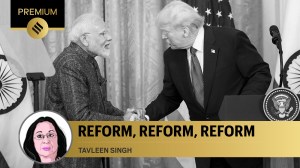Shortage of radiologists a concern, fostering research in AI can augment capabilities of radiologists: Experts
Experts said digital diagnostic delivery platforms have immense potential to augment the capabilities of radiologists, assisting them in diagnosing and analysing medical images more efficiently.
 Doctors in Bengaluru have expressed worries about a shortage of radiologists. (Representational Photo)
Doctors in Bengaluru have expressed worries about a shortage of radiologists. (Representational Photo) Bengaluru-based doctors have raised concerns over the ‘shortage’ of radiologists. They said that fostering research and development in artificial intelligence (AI) and machine learning (ML) applications in radiology can augment the capabilities of radiologists leading to accurate diagnoses.
Dr Jagadish Hiremath, chairman, Aasra Hospitals, Bengaluru, said: “Amidst the remarkable advancements in medical technology, the shortage of radiologists in India continues to pose a significant challenge, impacting the very essence of patient care. I am deeply concerned about the adverse effects of this shortage on the quality and efficiency of diagnostic services. The statistics are alarming – India currently has approximately 20,000 radiologists to serve a population of over 1.4 billion people. This translates to an astounding ratio of just one radiologist for every 1,00,000 individuals, far below the ideal standards recommended by global healthcare organisations. As a result, patients often face prolonged waiting periods for essential imaging tests, leading to delayed diagnoses and treatment plans.”
He added that the shortage of radiologists has far-reaching consequences for patient outcomes. “Timely and accurate diagnoses play a pivotal role in determining the appropriate course of treatment, especially in critical conditions. Delayed or inaccurate diagnoses may lead to compromised patient safety, prolonged hospital stays, and increased healthcare costs. Furthermore, the immense burden on our limited radiology workforce can lead to burnout and fatigue, potentially compromising the overall quality of reporting,” Hiremath said.
He further said that in order to address the shortage of radiologists, India should invest in medical education and provide incentives for young medical graduates to specialise in radiology.
Hiremath said, “The way forward lies in a multi-faceted approach, encompassing education, innovation, and collaboration. To address the shortage of radiologists, we must encourage and invest in medical education, providing incentives for young medical graduates to specialise in radiology. Equally important is fostering research and development in artificial intelligence and machine learning applications in radiology. Leveraging these technologies can augment the capabilities of radiologists, leading to quicker and more accurate diagnoses. Collaboration between healthcare institutions, government bodies, and academia is pivotal in creating a sustainable solution. This involves establishing training programs, fellowships, and exchange initiatives to develop a skilled and competent radiology workforce. Additionally, teleradiology and teleradiology partnerships can be harnessed to overcome geographical barriers, enabling radiologists to extend their expertise to remote areas.”
Dr Chandrasekar Chikkamuniyappa, CEO and Senior Joint Replacement Surgeon at DHEE Hospitals, Bengaluru said, “With the advancing medical imaging technology and availability of AI for interventional radiology, more and more conditions are being diagnosed and treated earlier than ever before. However, the severe shortage of interventional radiologists and appropriate healthcare facilities with adequate infrastructure is limiting the accessibility of these to everyone. Addressing this shortage of skilled interventional radiologists and improving radiology and imaging infrastructure are crucial steps to ensure that these life-saving technologies reach everyone in need, reducing costs and improving overall healthcare outcomes.”
Kalyan Sivasailam, CEO, 5C Network, a digital diagnostic delivery platform said that the shortage of radiologists in India has consequences such as delayed diagnosis, increased workload for existing radiologists, and limited access to radiology services, particularly in rural areas.
“There is a shortage of radiologists, particularly in rural areas, which leads to delays in diagnosis and limited access to quality radiology services. Diagnostic infrastructure and equipment are outdated and insufficient, affecting the quality and efficiency of services. Ensuring consistent quality control and standardisation in reporting practices is another challenge,” he said.
“To address this issue, measures can include incentivising rural placement for radiologists, providing opportunities for continuing education, utilising digital diagnostics services, and embracing technology and automation, such as AI and ML. These strategies aim to enhance the productivity of radiologists and enhance their skills to ensure timely and quality radiology services for all,” he added.
Elaborating on how the shortage of radiologists can impact treatment, Sivasailam said, “It leads to delayed diagnosis, especially in time-sensitive conditions like cancer, which can result in worsened outcomes. Limited access to specialised radiology services, particularly in rural areas, hinders timely treatment planning and decision-making. Existing radiologists face increased workloads, potentially leading to burnout and compromised accuracy of reports and interpretations. Follow-up care may be impacted, with delays in monitoring treatment response or detecting complications.”
Experts said digital diagnostic delivery platforms have immense potential to augment the capabilities of radiologists, assisting them in diagnosing and analysing medical images more efficiently. PPP (public-private partnership) models can integrate AI algorithms and automation tools into radiology workflows, enabling faster and more accurate diagnoses, they added.
“5C Network enables radiologists to report anywhere and anytime via its AI-powered platform. It provides these specialists with tools and extensive capabilities, ensuring the highest quality of diagnostic reports. Studies have shown that the error rate of individual radiologist reports can range from 5 per cent to 15 per cent, depending on the complexity of the case. Against this backdrop, our platform’s rigorous quality control triggers make its accuracy rates over 99 per cent,” Sivasailam said.












